December 19, 2013 Military Aviation News
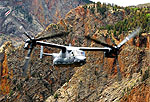
12/19/2013
Japan plans to beef up its military with a wide-range of new arsenal to deal with Chinese national security threats. The island nation plans to spend roughly $232 billion over the next five years on hardware it believes is capable of securing disputed islands in the South China Sea. The list of purchases includes “anti-missile destroyers, submarines, 52 amphibious vehicles, surveillance drones, U.S. fighter planes and 17 Boeing Osprey aircraft, capable of vertical take-off,” the BBC reported.
(Read More...)
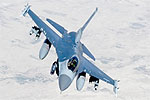
12/19/2013
An overconfident pilot who got less than half the sleep he needed before a night training mission was responsible for causing a midair F-16 collision over the summer that forced the other pilot to eject over the Atlantic Ocean, according to a U.S. Air Force report released Wednesday.
(Read More...)
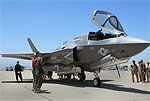
12/19/2013
Dateline August 2012: U.S. Air Force makes decision to establish an F-35 pilot training center at Luke Air Force Base following a three-year process that included an extensive environmental impact analysis. Dateline June 2013: U.S. Air Force chooses Luke AFB as the primary training site for the F-35A, and is the location for 72 additional F-35 Lightning II aircraft, bringing the eventual total number of the aircraft to be based at Luke to 144; six squadrons of 24 F-35A aircraft each.
(Read More...)
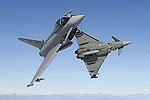
12/19/2013
The United Kingdom is testing a new collision warning system (CWS) for its fleet of Eurofighter Typhoon combat aircraft, it was disclosed on 15 December. Answering questions in the House of Commons, Defence Secretary, Philip Hammond said that the system will be rolled out across the fleet depending on the results of the current test programme. He did not, however, say when this might happen.
(Read More...)
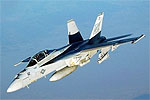
12/19/2013
High over Afghanistan, a two-man team of U.S. naval aviators found itself in trouble April 8 after an aerial refueling mishap damaged the right engine of their supersonic F/A-18F Super Hornet. Turbulence ripped the fighter away from an Air Force KC-135's refueling hose, leaving a piece of the tanker's refueling apparatus attached to the Super Hornet and causing the fighter to suck airborne fuel through its right engine.
(Read More...)
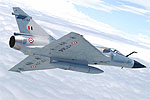
12/19/2013
The Government constantly reviews the security environment and ensures that the IAF is fully equipped to meet the security challenges. The IAF is in the process of modernizing its fleet by procuring various aircrafts including the Sukhoi-30 MKI and the indigenous Light Combat Aircraft. In addition, existing fleets of aircraft such as Mirage-2000, Jaguar and MiG-29 are being upgraded as per requirements.
(Read More...)

12/19/2013
Saab SAAB ABs's win of a coveted contract in Brazil gives a significant lift to the Swedish defense group's strategy of offering value for money as it competes for the world's defense-procurement dollars. Brazil ended a lengthy process to replace its aging fleet of fighter jets by selecting the latest "E" version of Saab's JAS Gripen jet fighter in a deal worth $4.5 billion. Boeing Co. and France's Dassault Aviation competed on winning the contract, which calls for 36 fighter jets.
(Read More...)

12/19/2013
Pakistan Prime Minister Nawaz Sharif on Wednesday hailed the induction of Pakistan Air Force's 50th JF-17 fighter aircraft, built with Chinese help, as a move towards "self-reliance" and said the country's defence strategy is being devised on modern lines.
(Read More...)

12/19/2013
The C-130J Super Hercules program reached another significant milestone with the delivery of its 300th aircraft, which was ferried today by a U.S. Air Force crew from the Lockheed Martin [NYSE: LMT] facility here.
(Read More...)
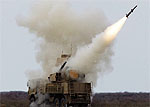
12/19/2013
Russia is upgrading its short-range Pantsir-S air defense systems with an improved capability to intercept unmanned aerial vehicles, a Defense Ministry spokesman said Wednesday. “The modernization of these unique systems aimed at increasing their effectiveness against UAVs has already started,” Col. Igor Klimov said.
(Read More...)
All Articles